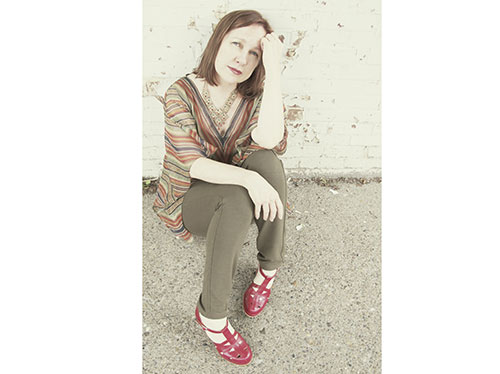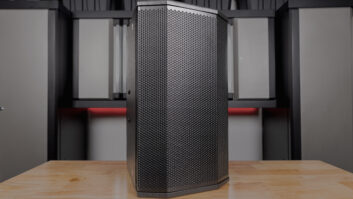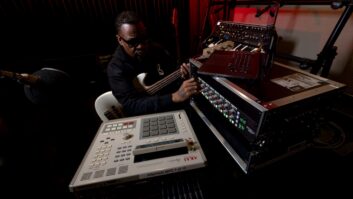
Music journalists often praise great songwriters—Cole Porter, Bob Dylan, Smokey Robinson, etc.—as “poets” of their age. But we don’t often get the chance to cover actual poems, such as the lyrics of Iris DeMent’s breathtaking new album, The Trackless Woods.
DeMent has set 18 poems by the Russian writer Anna Akhmatova to piano-based music that follows the cadence of the poems so reverently, the poetry remains the absolute centerpiece of the album. The Trackless Woods was produced by DeMent and guitarist Richard Bennett, who also co-produced DeMent’s Sing the Delta.
“When we were finishing that album, Iris mentioned that she was head-over-heels over the work of this poet, and had begun writing music, but she wasn’t sure where it was going,” Bennett recalls.
DeMent, whose adopted daughter was born in Russia, felt a connection to Akhmatova’s poems, which often explore women’s rights and emotions, the evils of war, and Russian history. By the time DeMent was touring with Delta, she had a collection of pieces written. And when she saw Bennett next, they agreed to make an album.
Also involved from the outset was DeMent’s close friend Leo Kottke, who is a fellow admirer of Akhmatova, as well as being a guitar virtuoso. It was Kottke who brought Burbank-based engineer Paul duGré (Weezer, Sam Phillips, Dave Alvin) into the fold.
“We recorded in Iris’s home, which was a real leap of faith for her,” duGré says. “Richard and Leo had said that if she was going to get the subtlety and energy from her writing, she should be at the piano where she wrote the music.”
“She worried that there would be too many things pulling at her sleeve at home,” Bennett recalls. “But the seed took hold and she came to like the idea.”

DeMent lives with her daughter and husband, singer/songwriter Greg Brown, in an arts and crafts bungalow in Iowa City. So, duGré searched for equipment rental sources in the area. “I told Iris, ‘I couldn’t find any places to rent recording equipment, but this one company kept coming up in my search: I can easily rent a Ferris wheel!’” duGré says.
“Actually, one of the limitations was mine,” he continues. “I do mostly mastering these days, and I use the Pyramix system. This meant I had to bring my system to Iowa.”
Ultimately, duGré decided to FedEx some gear from Burbank. “But I put my best microphones in my carry-on,” he says. “I have an RCA 77 that J.J. Cale gave me when I started my studio. That was not going to leave my sight.”
duGré flew to Iowa on a Saturday, unpacked his FedEx parcels, and built the “studio” on Sunday to be ready for Monday morning tracking. He commandeered an office area for his rig: “… not so much for a control room as a listening area,” he says.
Rooms in the DeMent/Brown home are not oversized, so duGré situated drummer Bryan Owings in the living room with DeMent and her 1910 Mason & Hamlin baby grand. He put up just a few mics on the kit: an Electro-Voice 666 on kick, a Royer SF-24 on floor tom, and a suspended Electro-Voice C090 lavalier overhead. DeMent’s piano took another Royer SF-24.
DeMent’s vocal mic was duGré›s prized RCA ribbon. “Iris commented that engineers usually use a condenser on her, and she has to sing really close to the mic,” duGré says. “But since she was going to play piano and sing, we found that the ribbon worked really well because she could swing her head and she could come closer or back away from the mic and her vocal would stay pretty even. It’s a different sound from what she was used to; it has more of an old-timey kind of feel to it that fit with our approach.”
Bennett was also set up in the main room to allow communication between the co-producers. “On his acoustic, I used an old Schoeps CMT-56, for that really crisp, clear sound,” duGré says. “For the electric, I used a Beyer M88.”
“I mostly played a gut-string acoustic and my Gibson ES-330,” Bennett says. “I also brought a little instrument called a Mandolin Guitarophone, which is not a mandolin at all. It looks more like an autoharp.”
“I had never seen that instrument before,” duGré says. “Richard played it with finger picks, and it’s open-tuning, so the ‘harp’ parts are custom-tuned.”
Kottke, who played acoustic on a couple of tracks and electric on one, used Bennett’s rig. A smaller part of the living room, separated by a pony wall accommodated Jon Graboff (pedal steel, guitars) and Dave Jacques (bass). But truly, there was almost no isolation between instruments. “It’s a live room with lots of wood, and there was tons of leakage. It was just, ‘Let’s get this as good as we can and make it come together in the mix,’” duGré says.
duGré kept his recording chains pretty simple—using API mic pre’s and little else. The group tracked three songs a day for close to a week. Then duGré went back to Burbank to mix and master.
“In the mix, I mainly had to embrace the leakage, but I would shift the balances to feature an instrument,” says duGré, whose primary mixing tools are the plug-in EQs, reverbs, etc. within Pyramix. “If I brought up too much of one sound, then the drums would have to change or the piano would change—reprioritizing. Luckily, Iris’s vocal is so strong, it was really not a problem.”
“Her voice is so pure and her piano playing is so straightforward, and the tunes come from such an organic place,” Bennett says. “That’s what it’s about.”







